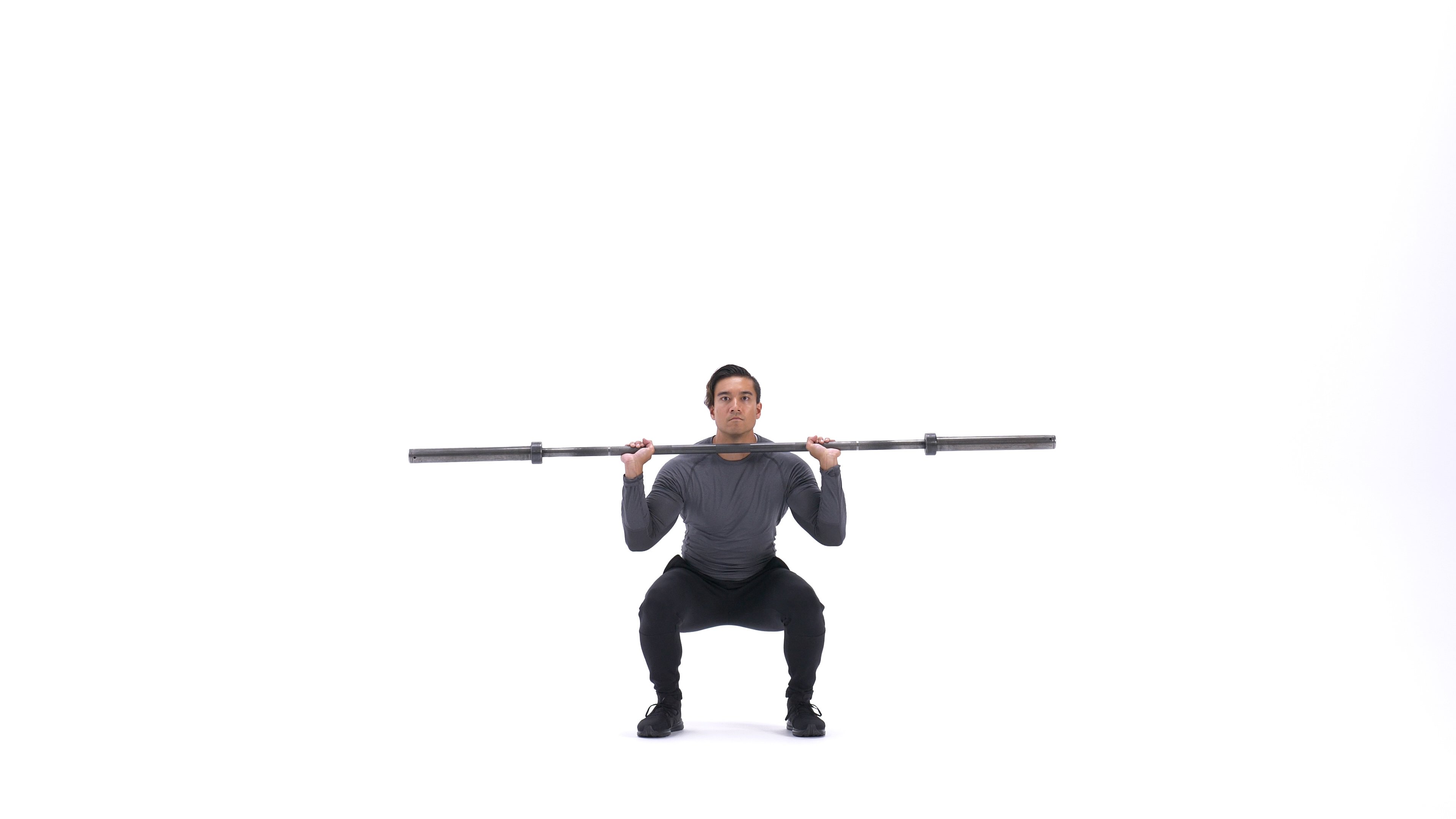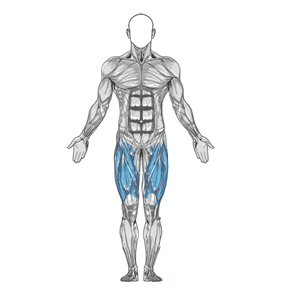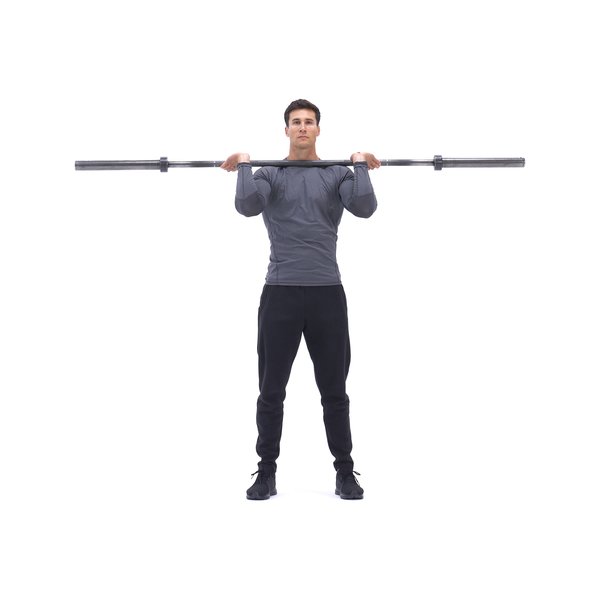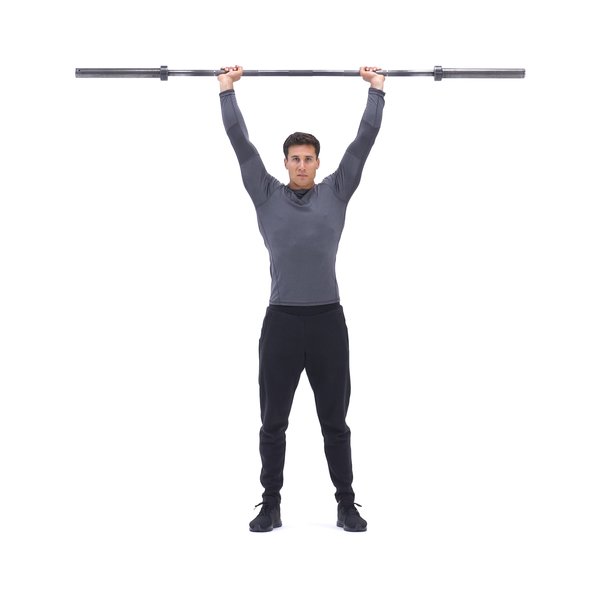Barbell thruster Images


Barbell thruster Instructions

- Set the bar in a rack slightly below shoulder level so that when under it, your knees are slightly bent. Rest the bar on top of the front deltoids, pushing into the clavicles, and lightly touching the throat. Your hands should be in a clean grip, touching the bar only with your fingers to help keep it in position.
- To unrack the bar, push upward into it and push your hips forward. Step away from the rack and position your legs using a shoulder-width medium stance with the toes slightly pointed out. Keep your head and elbows up at all times. Your triceps should remain parallel with the ground. Keep a neutral neck and flat back. This will be your starting position.
- Descend into a squat by pushing your hips and butt back. Continue down until the upper legs are at or just below parallel to the floor. Inhale as you perform this portion of the movement.
- As you prepare to ascend, push through your heels and begin to wrap your fingers tightly around the bar for a firm grip. As you near the top of your squat, begin pressing the bar up towards the ceiling, allowing your neck to hyperextend so that the bar has room to move.
- A final position will be one in which your arms are fully extended overhead and your legs straight. Maintain tightness from head to toe.
- Lower the bar slowly, allowing your knees to bend to lessen the blow. Immediately transition back into the squatting movement to continue into the next repetition. Repeat for recommended number of repetitions.





